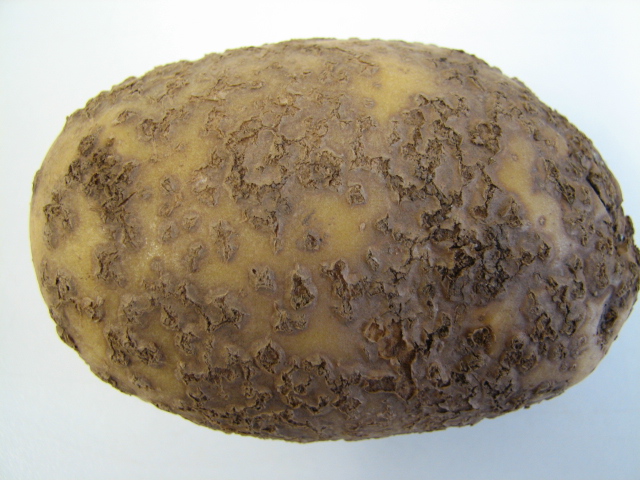 Soil-borne pathogens of potato cause a number of serious blemish diseases. By employing appropriate soil sampling strategies in conjunction with a method for soil DNA extraction and real-time PCR assays to detect and quantify target pathogens, we can validate the relationship between soil-borne inoculum and disease risk. The relationship between pathogen detection and disease risk for black dot (Lees et al. 2010 and Brierley et al. 2015) and powdery scab (Brierley et al. 2012) have been determined. Furthermore, the impact of soil-borne inoculum on disease has been investigated in conjunction with other control factors such as host resistance and crop management, for example, crop duration and chemical control (Brierley et al. 2018).
Soil-borne pathogens of potato cause a number of serious blemish diseases. By employing appropriate soil sampling strategies in conjunction with a method for soil DNA extraction and real-time PCR assays to detect and quantify target pathogens, we can validate the relationship between soil-borne inoculum and disease risk. The relationship between pathogen detection and disease risk for black dot (Lees et al. 2010 and Brierley et al. 2015) and powdery scab (Brierley et al. 2012) have been determined. Furthermore, the impact of soil-borne inoculum on disease has been investigated in conjunction with other control factors such as host resistance and crop management, for example, crop duration and chemical control (Brierley et al. 2018).
Establishing a relationship between detectable soil-borne pathogen levels and disease is not always straight forward and we are currently working on improving the detection of Rhizoctonia solani AG-3 inoculum which can cause black scurf and stem canker and pathogenic Streptomyces spp. which cause common scab.
Through quantifying pathogen levels in soil and on seed tubers planted at the Balruddery long-term sustainability research platform), the effect of host resistance and treatments associated with conventional and sustainable crop husbandry practices on both disease and soil contamination are being investigated across a 6 year rotation.
The diagnostic techniques employed in our research also enable us to investigate the complex interactions between host resistance/vectors and pathogens, for example, between the virus PMTV, its vector Spongospora subterranea and potato cultivars.
Predictive diagnostics are a tool in IPM potato toolbox
Contact Jennie Brierley for further information
